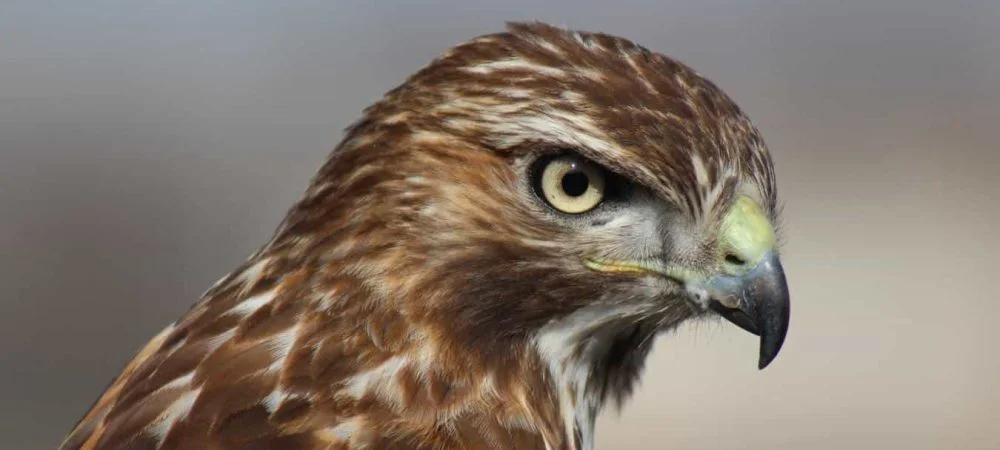
Want to learn more? This book on the Birds of Prey of North America is a fantastic read!
Wisconsin, known as ‘America’s Dairyland’ for its famous cheese, also has a lot to offer in terms of wildlife and nature.
It has a coastline on two famous lakes, Lake Superior and Lake Michigan.
Wisconsin’s wildlife ranges from bison to white-tailed deer to grey wolves.
The hawks that you are most likely to be able to see in Wisconsin are the Red-Tailed Hawk and the Red-Shouldered Hawk, being two of the most common hawks in the US.
The rarest hawk in the state is the Swainson’s Hawk as it only has a small breeding area within Wisconsin.
The state has a large number of protected birds and they have a conservation plan to help protect the 116 priority bird species. This is called the ‘Wisconsin All-Bird Conservation Plan’.
Wisconsin has a continental climate and is described as a humid state.
This is largely due to it being a mid-western state and it means that the state has warm summers and cold winters with noticeable seasonal changes.
Wisconsin has 43 different state parks. It also has a variety of state forests and wildlife areas that bring the total number of state park units to 66.
Combined, all of Wisconsin’s state parks bring an annual average of 14 million visitors.
Since we’ve talked about Wisconsin’s climate and bird population, you may be thinking you want to visit to try to spot some hawks for yourself.
But which types of hawks should you look for and how will you know when and where to spot them?
Below I’ve compiled information of each of the eight species of hawk in Wisconsin and when is the best time to try and see them.
Want to attract birds of prey to your yard? Take a look at our article!
What Hawks can be seen in Wisconsin?
Table of Contents
1. Sharp-Shinned Hawk
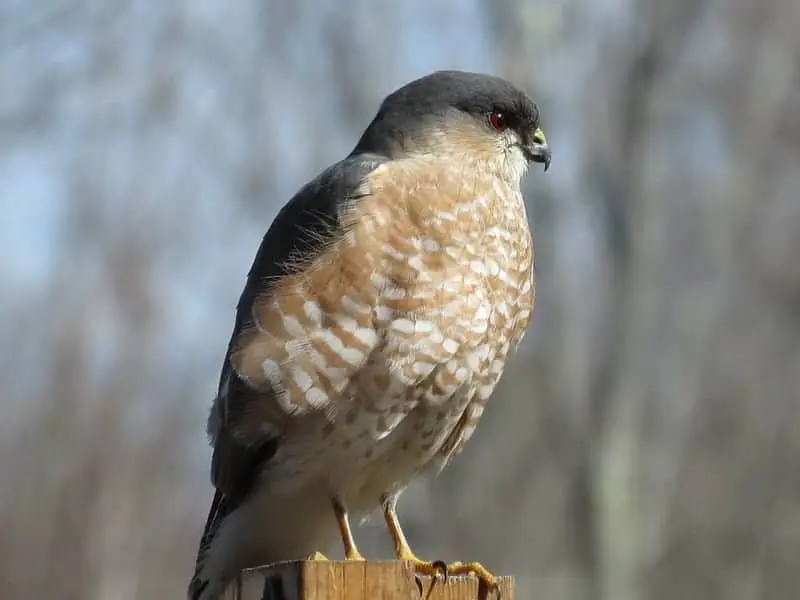
“Sharp-Shinned Hawk” by ‘Dennis Murhpy‘ is licensed under CC BY 2.0
Wingspan
43-56cm
Weight
87-218g
Life Expectancy
3 years
Diet
Robins and Thrushes
The Sharp-Shinned Hawk is the smallest know species of hawk in the USA, the males are smaller than females, the females are approximately one-third larger than males.
IUCN has classified the conservation status of this hawk to be least concern. Slate-coloured feathers cover the hawk’s wings and back and it has pale orange feathers covering its breast.
Juvenile Sharp-Shinned Hawks are covered in brown feathers and some have white underbelly feathers. Dense forests act as this hawk’s home and it makes its nest on low baring trees.
The Sharp-Shinned Hawk has two distinct calls, one that is said to sound like ‘kik-kik-kik-kik’ and the other is a shrill squeal.
A male and a female can often be seen flying overhead in a circular motion as a show of courtship before mating. They raise their young together, males catching prey when the hatchling is first born.
The best place to try and spot this hawk in Wisconsin is in coniferous wetlands or forests in the northern region of the state. Some Sharp-Shinned Hawks have been spotted state-wide but they are much more common in the northern half of the state.
These hawks are permanent summer residents in Wisconsin before they migrate south for the winter. To see one nesting, July and August are the best months and to see its migration, September is the best month.
Some hawks still stay in Wisconsin over the winter in the southern region of the state, but it is not common.
2. Cooper’s Hawk
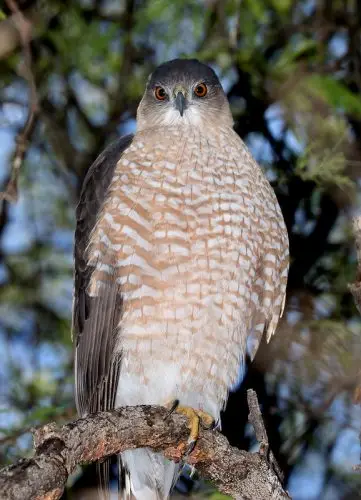
Wingspan
62-90cm
Weight
330-680g
Life Expectancy
Up to 12 years
Diet
Small Birds, Mice & Squirrels
Don’t try to listen out for this hawk, they are known for being silent. Cooper’s Hawks are classified as a medium size hawk, they are similar in size to a crow and the females are usually much bigger than the males.
They are native to northern America and classified by IUCN as least concern, with a note of an increasing population. These hawks are described as having a typical hawk shape and adults have steel blue feathers on their back and wings, and have warm red feathers covering their bellies.
Juveniles have brown backs and wings and have streaks of brown feathers covering their underbelly. Cooper’s Hawks stay in wooded habitats, ranging all the way from dense, leafy forests to certain backyards. They make their nests in tall trees.
Cooper’s Hawks are native to Wisconsin and it is common to be able to see them all year round. However they do not usually breed in Wisconsin as they migrate further north in the spring to do so.
They begin their autumn migration around October where they travel south for winter, this is one of the best chances to see a Cooper’s hawk flying overhead.
It depends on when you go to Wisconsin as to where would be the best place to spot a Cooper’s hawk. If you are visiting in the summer you have a better chance of seeing one in the northern region and if you are visiting in autumn you have a better chance of seeing one in the southern regions of the state.
3. Northern Goshawk
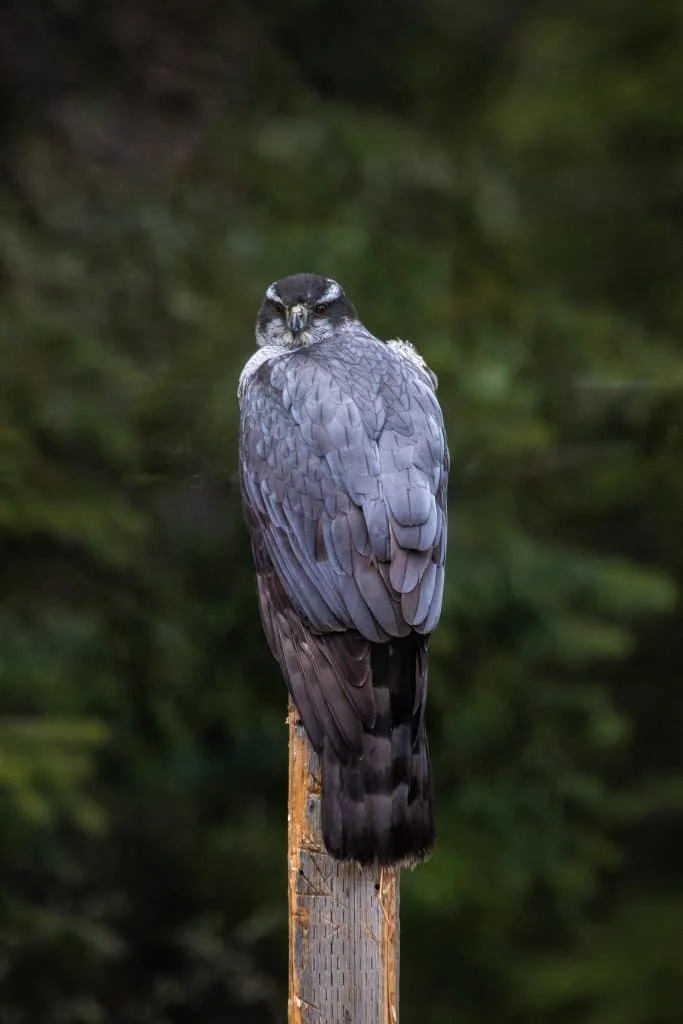
Wingspan
89-127cm
Weight
631-1364g
Life Expectancy
7 Years
Diet
Mammals, reptiles & insects
Northern Goshawks are a goose-sized hawk with slate-grey wings and a pale grey underbelly. Like other hawks, females are larger than males. Juvenile Goshawks have streaky brown feathers across their wings and chest.
These hawks make their habitats and nests in forests, mainly coniferous forests. You should observe the Northern Goshawk from a distance as they are very protective of their nests and have been known to attack humans.
They have an alarm that sounds like a ‘ki-ki-ki’ which they use when threats are close.
The best place to try and see one of these hawks is in the northern regions of the state. There have been some territories found in the central part of the state across pin plantations, but this is less common. Their nests are usually in coniferous trees in forest areas.
Northern goshawks return to Wisconsin from their winter migrations around march and they make their nests from their arrival up until July.
They leave for their winter migration during October meaning that the best time to try and see these birds is in the summer months when they are nesting in the northern forest regions.
4. Red-Shouldered Hawk
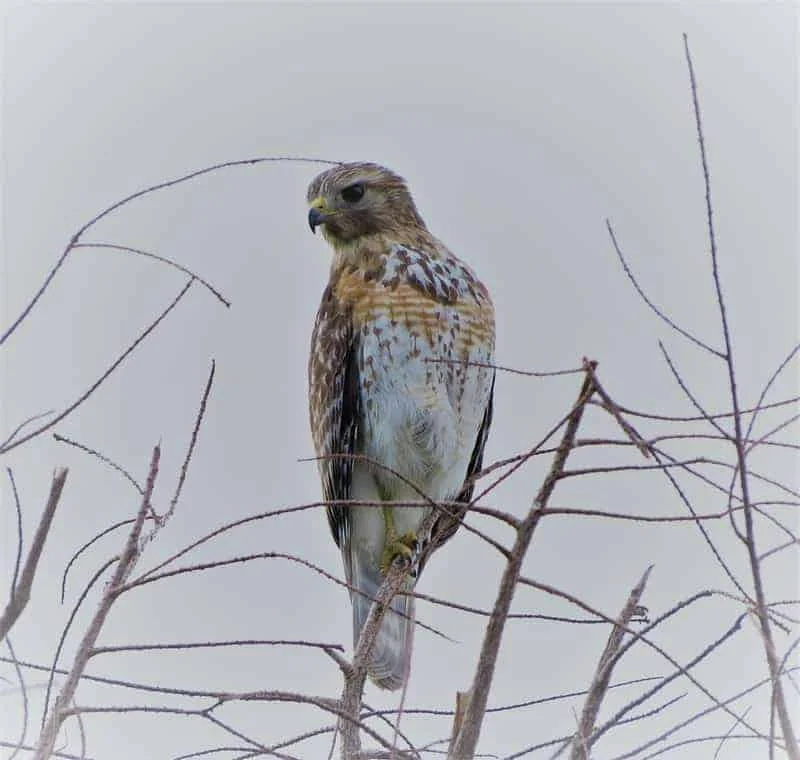
Wingspan
94-111cm
Weight
486g-774g
Life Expectancy
2 years
Diet
Small mammals, reptiles & amphibians
The Red-Shouldered Hawk is a large colourful hawk with white and dark brown checked wings and warm red feathers on its breast. Juveniles have brown backs and white underbellies.
Red-Shouldered Hawks make their nests in woodlands which often lie on the edges of rivers and swamplands. The Red-Shouldered Hawk has a distinct call described as a ‘kee-aah’ sound, the first note is very high pithed and the second note drops to a much lower pitch.
The Red-Shouldered Hawk is a threatened bird in Wisconsin and they have been known to make breeding nests across all regions in the state.
Whilst they have a wide distribution they are still uncommon and are mostly spotted in regions with major river systems as they make their nests in trees along riverbanks.
These hawks usually spend the summer months in Wisconsin before migrating south for the winter. That being said, some hawks choose to overwinter in Wisconsin in the more southern regions in the state.
They return to Wisconsin from their winter migration between March and April.
5. Broad-Winged Hawk
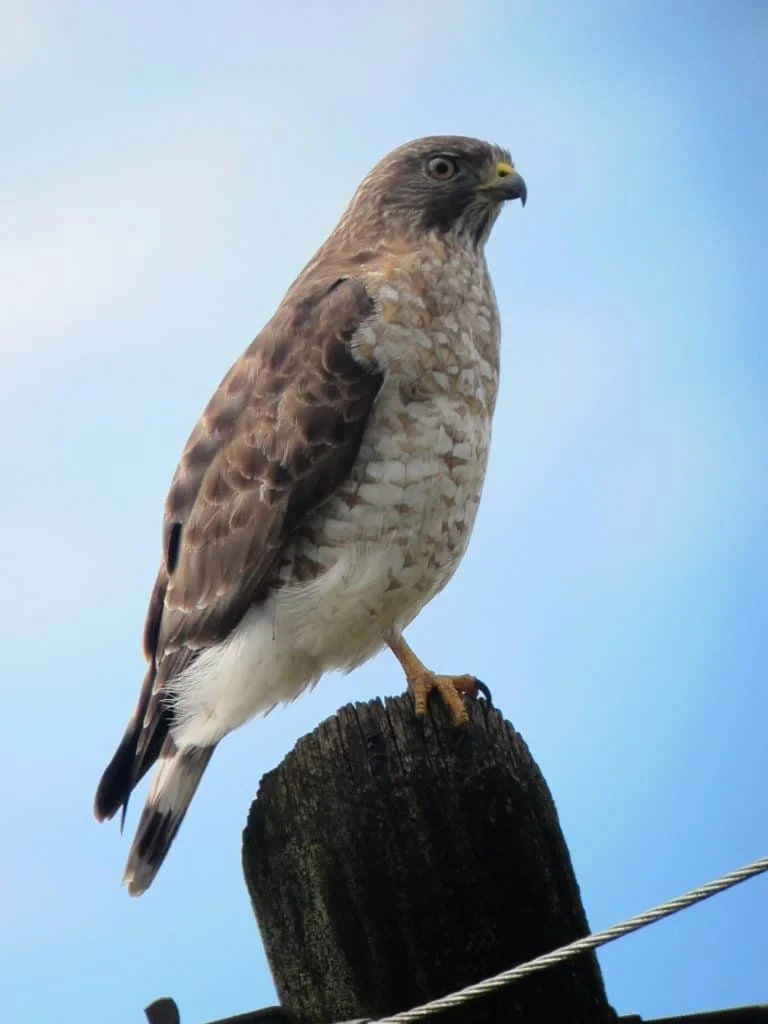
“Broad Winged Hawk” by ‘Felipe Uribe‘ is licensed under CC BY 2.0
Wingspan
81-100cm
Weight
265g-560g
Life Expectancy
Up to 20 years
Diet
Small mammals & insects
Broad-Winged Hawks are medium sized hawks that are covered in reddish-brown feathers and they have black and white bars on their tails. Juveniles have lighter brown feathers covering their wings.
Broad-Wings are named for their wing shape and often nest in forests and spend a lot of their time in the canopies of leaves. Their call is compared to that of a piercing whistle and is most commonly heard during the summer.
This hawk’s migration is not solitary and large flocks are often seen flying together.
Broad-winged Hawks are most abundant across the northern half of the state and make their nests along forest and woodland edges. Some hawk nests have been found in southern Wisconsin but these have only been found in much more dense forest areas.
These hawks are summer residents in Wisconsin and do not stay in the state over winter, they migrate further south.
They begin their migration usually around October and will return to Wisconsin around April. Usually they finish building their nests around July.
6. Swainson’s Hawk
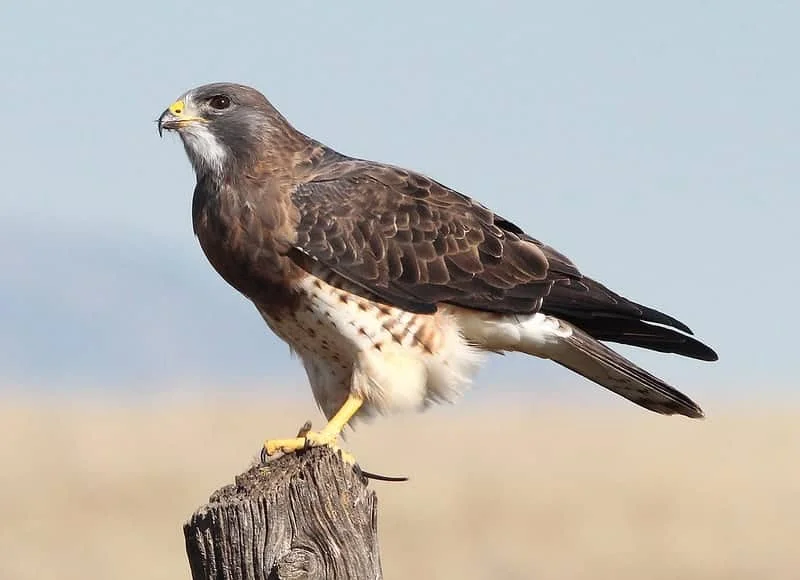
Wingspan
4 feet
Weight
693-1367g
Life Expectancy
16-19 years
Diet
Mammals & Insects
These large hawks are known for having long wings and short tails. Most Swainson’s Hawks have dark feathered wings and back with their bellies being covered in bright white feathers.
However regional differences have shown there can be lots of colour variation in these hawks. During the summer, Swainson’s Hawks spend their time in wide-open spaces and nest in grasslands. They spend a lot of their time on high perches waiting for prey.
Not a lot is known about the ecology of Swainson’s Hawks. In Wisconsin they are usually seen when they are migrating, this migration occurs in October and this makes for a busy time at famous hawk watching spots.
Swainson’s Hawks are very rare to spot in Wisconsin, however if you are determined your best bet would be to search in the eastern and southern-eastern regions of the state.
They can usually be seen in these areas over open grasslands performing a loop and dive routine for courtship.
7. Red-Tailed Hawk
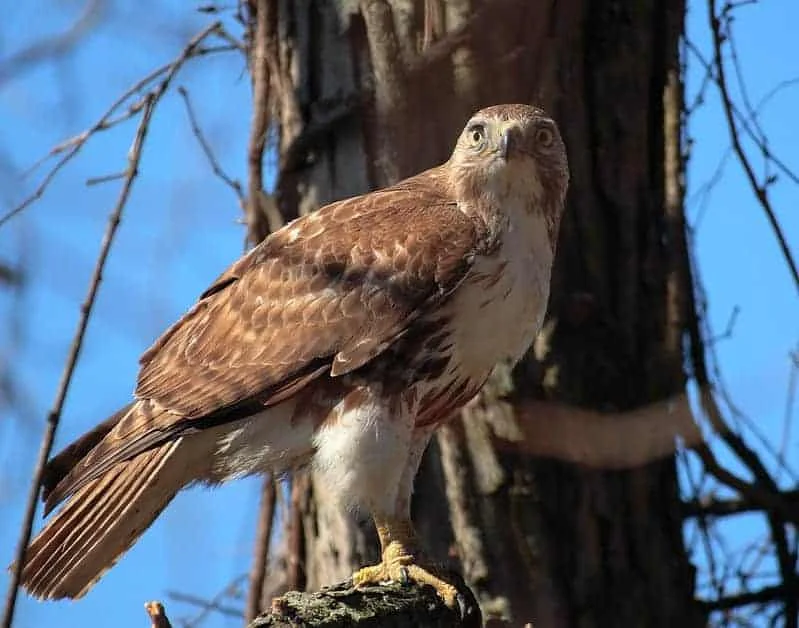
Wingspan
114-133cm
Weight
900-1460g
Life Expectancy
10-15 years
Diet
Small mammals, mice & voles
The Red-Tailed Hawk is the second largest hawk in north America and is also one of the more common species. They are known for their red tail and white feathered bellies.
Red-Tailed Hawks are solitary birds and habituate in the open country, often perching on lone trees. The distinct raptor screams in Hollywood movies is said to be somewhat inspired by the scream of this hawk.
The male Red-Tailed Hawk will put on a display flight to try and impress a female, this display involves wide circles at a great height.
Red-Tailed Hawks can be seen in Wisconsin year-round, however the best time to see these birds is during the summer and winter months.
The best time of day to be watching for these hawks is early in the morning as this is when they most commonly take flight to hunt.
These hawks have been seen state-wide around Wisconsin, although they do have areas of higher abundances.
They are most common in the southern regions of Wisconsin, this applies in both summer and winter and the best place to see these birds is on the edges of open fields, perched on telephone poles or lone trees.
8. Rough-Legged Hawk
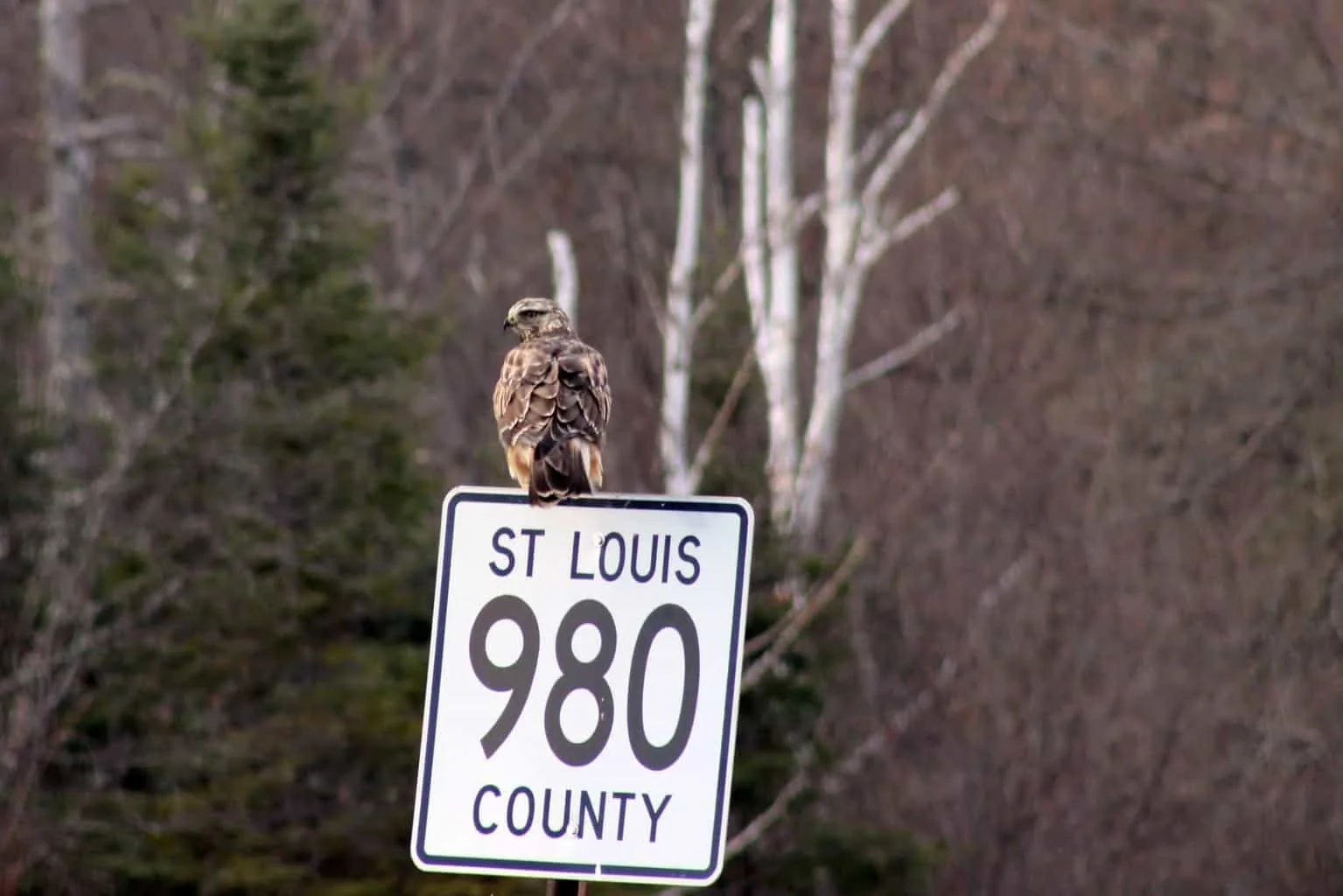
Wingspan
132-138cm
Weight
715-1400g
Life Expectancy
Up to 18 years
Diet
Small rodents
Rough-Legged Hawks are known for their vibrant feather patterns and are usually medium to large in size. They have pale heads and dark bellies with pale tails and dark feathers on the tip.
Rough-Legged Hawks breed in the artic during the summer months and migrate south in winter. After migrating they spend time in open habitats like fields and have also been seen habituation US airports.
They build their nests with a bulky mass of sticks on the cliffsides. Some hawks have been observed using bones to make their nest as well.
The best time to see one of these hawks in Wisconsin is during the winter months. They spend the summer in the artic and return to Wisconsin around September to October.
They leave once again in March. The best time of day to see these hawks is early in the morning, they stay hidden at night and hunt when they wake up.
One of the best places to spot Rough-Legged Hawks is in central Wisconsin, particularly in Waushara county. Their nesting sites will usually be along the edge of swampy woodlands and the edges of forests. You can usually spot them perching high in trees or hovering over open fields.

More Articles.
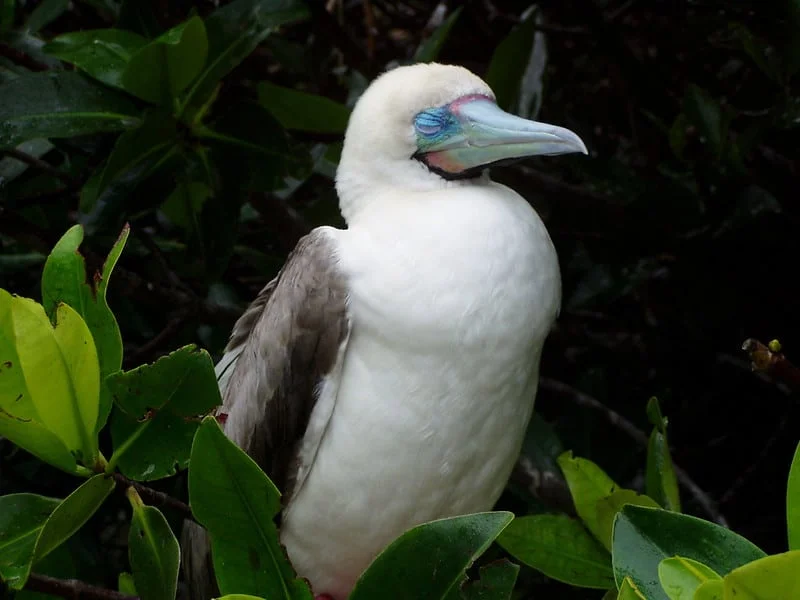
North American Birds with a White Breast (18 Species with Pictures and Sounds)
Canada and America are filled with many wonderful birds with a white breast – in
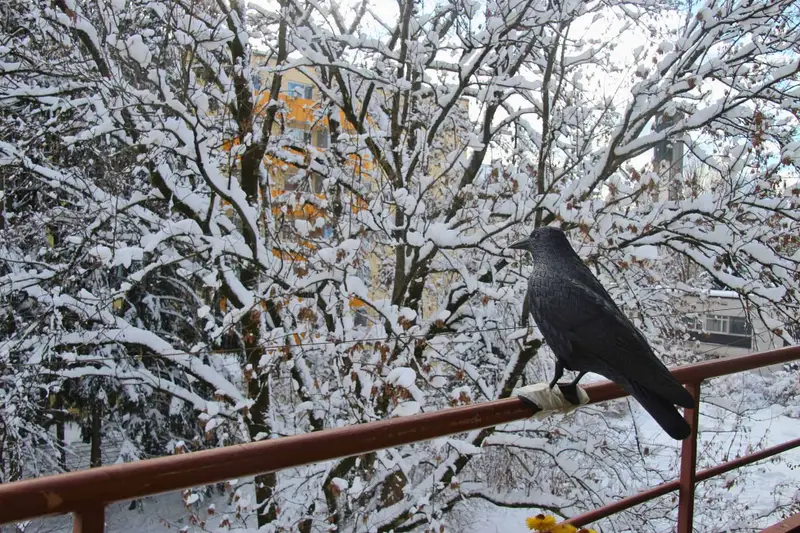
How to Attract Birds to a Window?
All birds can be attracted to a window feeder. Some will require bright colors to
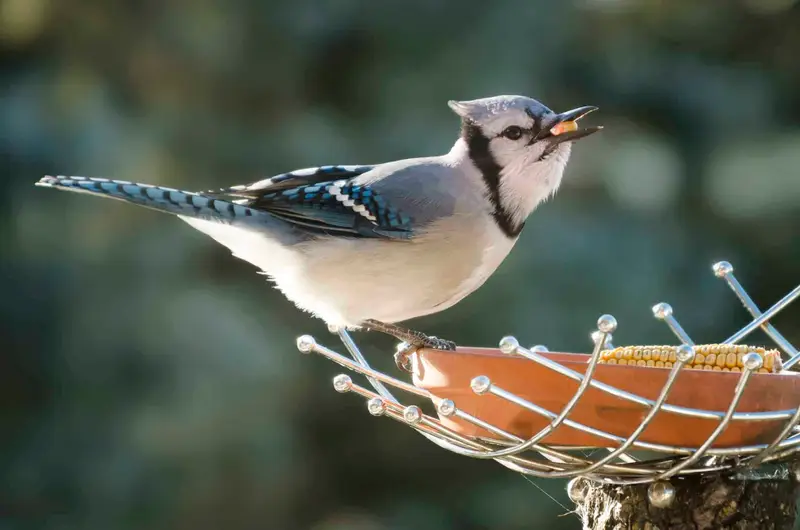
How to Attract Blue Jays to your Yard?
Some may vehemently argue that Blue Jays are the bullies of the bird kingdom and

About Us
We are avid bird-watchers who recently retired, allowing us more time to travel the world. Fortunately, we have managed to visit numerous countries around Europe, Asia, and America. Watching and photographing birds has been a passion for many years and we are making the most of the extra time on our hands!

Hello,
I live in WI, in a small city called Hartford. I was letting my daughter’s dog out one day when I heard all the crows screeching and taking flight. I figured there might be a hawk nearby, but to my great astonishment, I saw an Eagle with a young one circling and flying overhead. Multiple times I might add. My daughter’s dog is very small and I took him inside. The next day I saw my daughter’s neighbor and told her about the Eagles because she also has a very small dog. She told me that she had seen them the week before, hunting a block down. Since then I have seen them 2 more times and my son in laws father has seen them as well where he lives. Amazing!!! I might add that now I stand by my grandbaby dog when I let him out and have told my daughter to do the same. I had read recently that WI is seeing a great comeback 9f Eagles, but I never thought I’d see them here. My husband and I have a vacation home in Northern WI (not too far North, by WI Dells)and never see them there! Lol